A series of excellent traditional Chinese culture talks about the reproduction of the "Chinese Orchestra" of the Tang Dynasty
China is known as "the state of ritual and music" and has a long history of instrumental music and a long music culture. To this day, there are still some musical instruments from ancient times that have been preserved in the historical evolution, such as drums, ruan, xun, etc., still conveying the voiceless sounds of nature from distant history to everyone, showing the ancient musical instruments of the sound of silk and bamboo.
Drums: From the morale-boosting war drum to the head of the instrument "octave"
In the "National Music Ceremony", the traditional drum music "Heroes of my country" performed by young percussionist Wang Jianan brought a refreshing audio-visual experience to the audience with traditional Chinese drums.
The drum is a percussion instrument that originated in the primitive society of our country. Judging from the pottery drums unearthed today, it has a history of at least 5,000 years. However, the original drum was not used as a musical instrument.
In ancient times, our ancestors regarded the drum as an artifact that could reach the sky, and used it in the activities of worshipping ancestors and gods. The drum has a longer history of use on the battlefield than it has as a musical instrument. In ancient times, during the battle between the two armies, drums were used to cheer and encourage fighting spirit. According to legend, the Yellow Emperor was invincible in nine battles against Chiyou. Later, Jiutian Xuannv tried to find a way for the emperor. She ordered the soldiers to slaughter Kui cattle and made 80 drums made of Kui cowhide. When the Yellow Emperor led his troops to declare war with Chiyou, he put down the "Qimen Dunjia" and let a strong man named Chang Bo beat the drum during the battle. It made the Chiyou soldiers lose their souls and smashed into an army. The military might of the Yellow Emperor's army was greatly boosted, shouting to the sky, invincible, and finally captured and killed Chi You.
In addition to cheering up the drums, another important purpose is to transmit information and intelligence. "Records of the Eastern Zhou Dynasty" describes the feudal lords of Qi Huan Gonghui's alliance, "building an altar with three floors, three feet high, with a bell hanging on the left and a drum on the right", drumming to gather ministers. In the allusions of King You of Zhou's "Fenghuo Opera Princes", "under the Li Mountain, there are more than twenty Yanduns and dozens of drums, but there are thieves and bandits, who let go of the wolf smoke and go straight to Xiaohan, and the nearby princes send troops. Help me, I hummed the big drum again, urging the drums to come." The drum can also be used to tell the time, that is, "Jiechen Drum". "Jiechen Drum" is a drum that announces the time of morning and evening. "In the morning and evening, thousands of vertebrae are cut, and the gates of the city are opened and closed." The location of the drum is usually placed on the drum tower in the city. Officials go to the court and the people live and work in this way. Now the big drum on the Bell and Drum Tower in Dongcheng District, Beijing was made in the Qing Dynasty. The diameter of the drum surface is 1.5 meters.
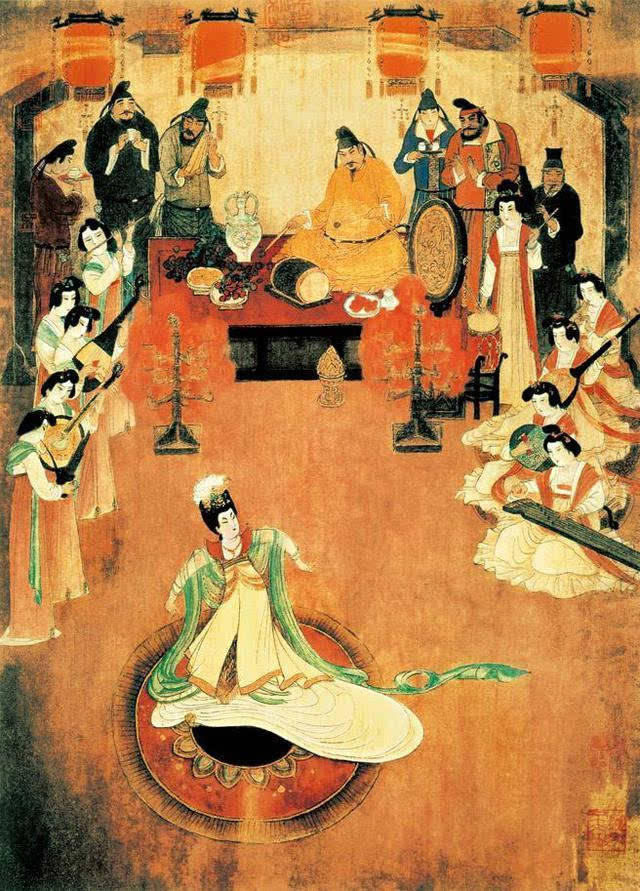
The drum was used as a real musical instrument since the Zhou Dynasty. The Zhou Dynasty formulated a system of drum music, specially set up "drummen" to be responsible for drum making, drumming and other affairs, and set the drum as the first of the "eight notes". The command and guidance of music is the so-called "drum, qin and serpent". The drum playing is also rich and flexible, with various techniques such as up, down, jump, flip, ride, flash, exhibition, jump, and move, which are dazzling. In the performance, it is mostly performed together with the dance moves, knocking and dancing.
After the Tang Dynasty, drum music entered the level of ritual music. Legend has it that Tang Xuanzong Li Longji was a musical genius, proficient in composition, conducting and performing.
He is especially good at beating the drum, and he broke several boxes just by practicing the drum and sticks. Minister Song Jing praised Xuanzong's drumming as "the head is like a green mountain peak, and the hands are like white raindrops." According to legend, Huang Fanchuo, a disciple of Liyuan, was very appreciated by Emperor Xuanzong of Tang Dynasty. Once, Huang Fanchuo thought that the emperor had not summoned him for more than 50 days, so he took a chance and slipped out of the palace to do private affairs. Unexpectedly, as soon as the front foot went out, Xuanzong came to call. Huang Fanchuo was frightened to death, and when he hurried back to the palace, he heard Xuanzong beating drums, his voice was enthusiastic and generous, hurried and messy, his face was ashen with fright, and he hurriedly pleaded with his servants: Don't enter the hall to report to the emperor for the time being, or your life will be in danger. After a while, Xuanzong changed a piece of music, the rhythm was soothing and the drum beat softly. When Xuanzong saw Huang Fanchuo coming, he asked casually, "Where did you go just now?" "His Majesty, the servant has come to a relative and just sent him out." "Fortunately, you came to see me at this time. One step earlier, there will be a good fight." Huang Fanchuo thanked the emperor again and again, and said in his heart, "It's very dangerous."
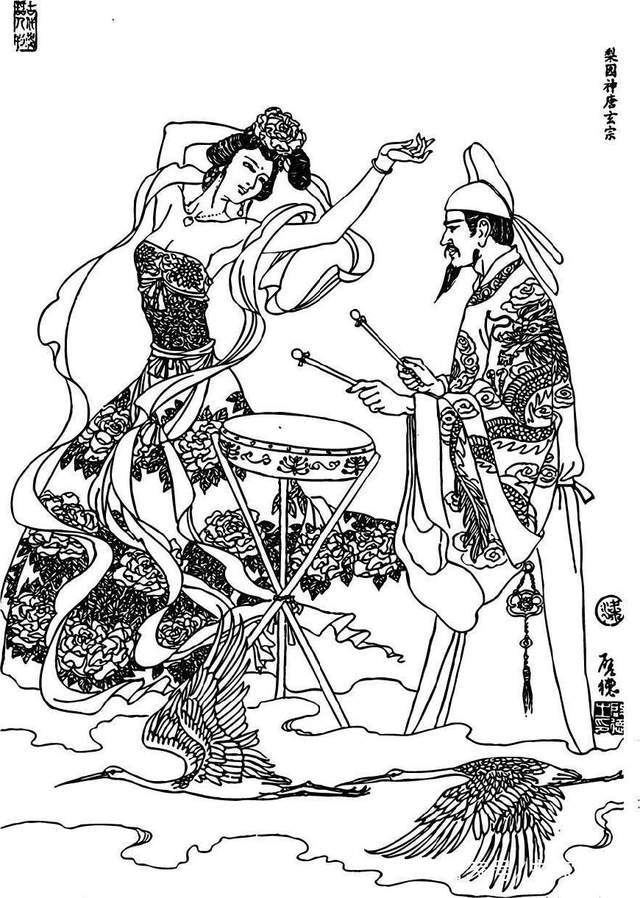
Entering the new century, Chinese drum music, which has lasted for thousands of years, has penetrated into the blood of the Chinese nation, from the religious sacrifices of various ethnic groups to the folk weddings and funerals, from the daily entertainment of the common people to major celebrations, from the accompaniment of opera to large-scale singing and dancing, sonorous and exciting. The sound of the drums knocked out the endless national spirit of the Chinese nation and the immortal spirit of the Chinese people for thousands of years.
Ruan: China's "Moon Guitar"
Ruan is a traditional musical instrument with a long history in our country. It has a development history of more than 2,000 years and still maintains its ancient shape today. We know that many plucked instruments such as pipa and dulcimer are imported. However, the musical instrument Ruan is our native musical instrument. According to legend, in the Qin Dynasty, Qin Shihuang concentrated a lot of human, material and financial resources in the country in order to build the Great Wall.
In order to unify command and management, a device similar to a "rattle drum" was invented and used at the construction labor site to command and transmit signals. Later, people tied strings on this instrument and installed the "fresh" of the piano column, which gradually evolved into a musical instrument. The ancients called it "Qin Pipa", which is the predecessor of Ruan we see now.
By the time of the Han Dynasty, this musical instrument had formed its unique playing technique, namely "playing" and "pickling". At that time, musical instruments using this technique were generally called "Pipa". Pi and Pa were originally the names of two playing techniques, derived from the homonyms "batch" and "ba". According to Liu Xi of the Eastern Han Dynasty, "Release Names and Musical Instruments" explained: "In front of pushing hands, it is called criticism, but when pulling hands, it is called ba, like when a drum is used, because of its name." It can be seen that "ba" and "ba" are plucked. There are two basic and common playing techniques in music, namely "playing" and "challenging" in contemporary terms.
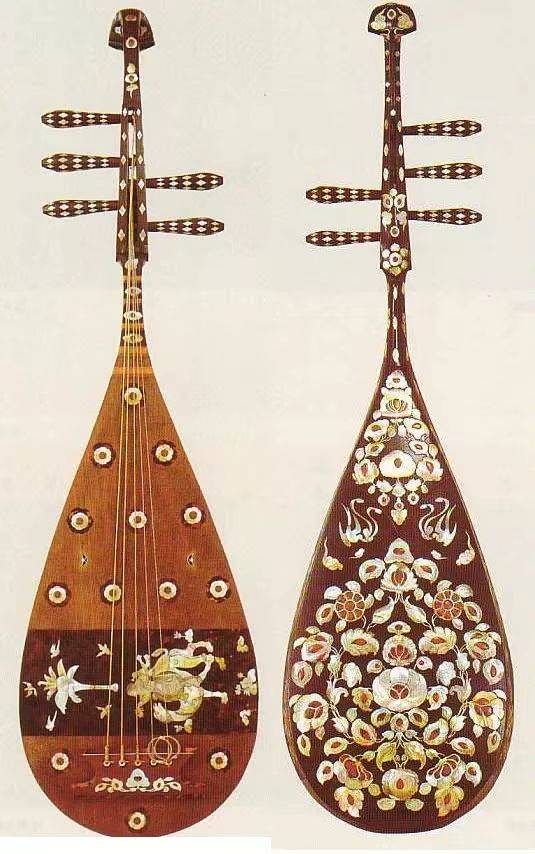
The five-string pipa with luotian and red sandalwood in the Sakura Institute, Japan
The earliest musical instruments in the shape of today's Ruan can be traced back to the time of Emperor Wu of the Western Han Dynasty more than 2,000 years ago. According to Fu Xuan's "Pipa Fu·Preface" of the Western Jin Dynasty, in 105 BC, that is, in the sixth year of Yuanfeng, Emperor Wu of the Han implemented a strategy of far-reaching and near-attack. He joined forces with the powerful Wusun Kingdom to attack the Huns, and then sent Liu Wu, the king of Chu, a criminal court official. His granddaughter relieved his worries and married Xu Wei (official name Cen Qiu), the Wusun King of the Western Regions, to consolidate the relationship.
The road to the Western Regions was unfamiliar, unfamiliar and far away. Emperor Wu of the Han Dynasty ordered musicians to create musical instruments that could be played while sitting on a bumpy carriage, so as to relieve the princess' exhaustion and loneliness on the road. The craftsmen thought for a long time, and after referring to various musical instruments, such as qin, zheng, Zhu, Konghou and other musical instruments, they created a musical instrument with a round speaker, a straight handle, twelve columns and four strings, which was called "Han Pipa" at that time. , which is Ruan's predecessor.
Why did Emperor Wu of Han choose this instrument? There is another legend that it has to do with its shape. We can see that Ruan's body is round, much like a full moon. After the princess marries far away, she can hold this musical instrument and play it, which means "to embrace the moon and miss the hometown", so as to relieve the princess's homesickness.
Since then, Jieyou has used this musical instrument as a sustenance, always with him, and returned to Chang'an after living in the Western Regions for more than 50 years. In the well-known "Zhaojun out of the fortress", the musical instrument that Wang Zhaojun carried with him is also this kind of musical instrument, not the pipa.
During the Eastern Jin Dynasty, Ruan Xian, one of the Seven Sages of Bamboo Forest, was the best at playing this musical instrument, which made it popular throughout the country and was respected and loved by people. Due to Ruan Xian's superb playing skills, people named this instrument after him, and called it "Ruan Xian Pipa". It is also the only musical instrument named after a person in our national instrumental music.
In the Tang Dynasty, with the prosperity and development of the Silk Road, the curved-neck pipa, which we now call "Pipa", which was introduced to China from the Western Regions, became popular and took the first place in the club. In order to distinguish the two instruments, people began to refer to the straight-handled round arpeggiated as Ruan for short. At that time, Ruan was highly valued by the court and was not only the darling of the upper class, but also a musical instrument commonly used by the official family and the public. Under this circumstance, a large number of Ruan's outstanding performers emerged and wrote a large number of Ruan's theoretical works. and textbooks. Ruan also broadcasted overseas, and foreign envoys from the Tang Dynasty came to Datang to study Ruan. The development of Ruan's musical instrument reached a peak in history.
Zhongruan
After the founding of New China, Ruan's musical instrument has been developed and innovated, making the timbre more integrated and the range wider, forming a complete family system. In the Ruan family, they are divided into high-pitched Ruan, small Ruan, alto Ruan, low-pitched Ruan, and La Ruan according to different pitches, forming a unified timbre system. Ruan's headstock, neck, body, pegs, mouths, frets, bridges, strings, and strings have also been improved, which can be used for solo, ensemble, chamber music ensembles, etc., enriching the national orchestra. The sound of the sound is fuller and richer.
Ruan's body is like a full moon, and its timbre is similar to that of a guitar, so foreign friends gave it a particularly beautiful name - Moon Guitar. In the 1970s, major music schools in my country successively established Ruan’s professional disciplines, and many composers created a large number of excellent works tailored for it, demonstrating its unique aesthetic art, among which representative works include “The Camel Bell on the Silk Road” Full River Red", "Yunnan Memories", "Mountain Rhythm" and so on.
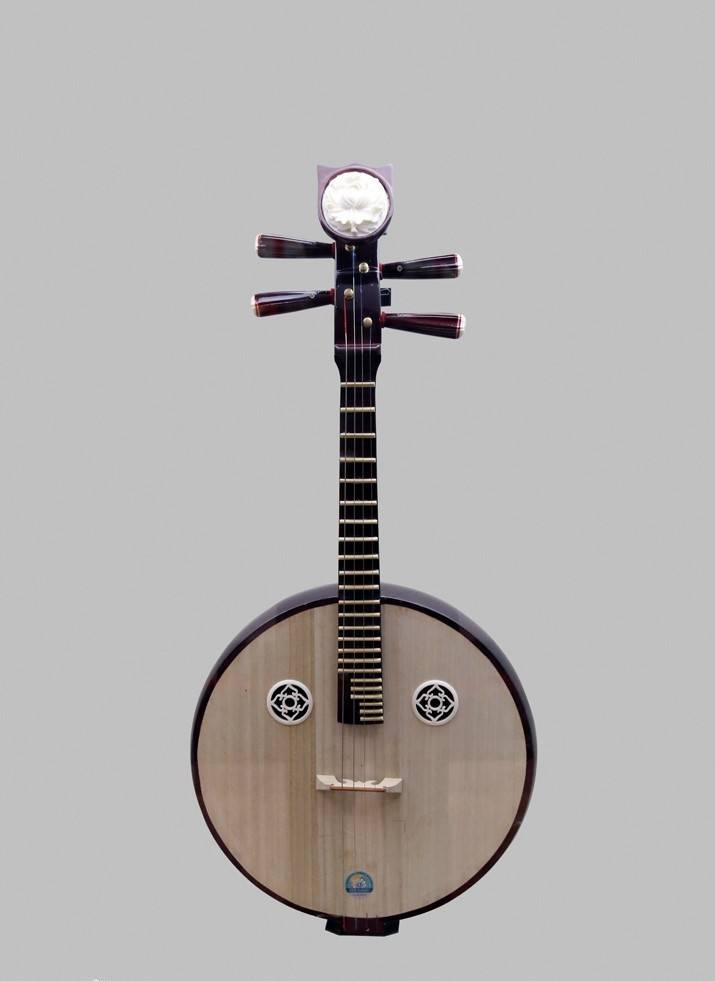
Xun: "Music Bottle" from Ancient Times
Xun, known as "the most ancient civilization in the history of world music", is also known as "the group of musical instruments in the world".
At the Hemudu site in Yuyao, Zhejiang, the oldest Xun has been found—the oval pottery Xun with only one blow hole. Archaeologists believe that Xun is also a musical instrument that was gradually transformed and evolved in the production and labor of working people. In primitive society, when the ancients hunted, they found that when throwing stones with cavities or holes, there would be a whistle sound of "hush hush". The ancients were therefore inspired to use clay to make a kind of utensil with holes and sound to trap prey.
After more than 7,000 years, Xun has experienced ups and downs and development. The pronunciation hole has developed from a blow hole to both a blow hole and a pronunciation hole. In the slave society, Xun developed to have three sound holes, and could play the four notes of the pentatonic scale.
In the Shang Dynasty, the five-tone hole appeared, which could blow every semitone within the octave. The shape of the xun has also changed from the earliest oval shape to oval, spherical, pear-shaped, and hammer-shaped. In the Zhou Dynasty when ritual music was prevalent, the xun was listed as a soil musical instrument and became one of the main musical instruments in the Yale band. According to legend, when Confucius was in the state of Qi, he heard a piece of music called "Shao" and was so intoxicated by the sound of Xun that he was haunted by it for three months, and he couldn't even taste the delicious meat. There is an allusion about "The son heard about the "Shao" in Qi, and did not know meat in March.
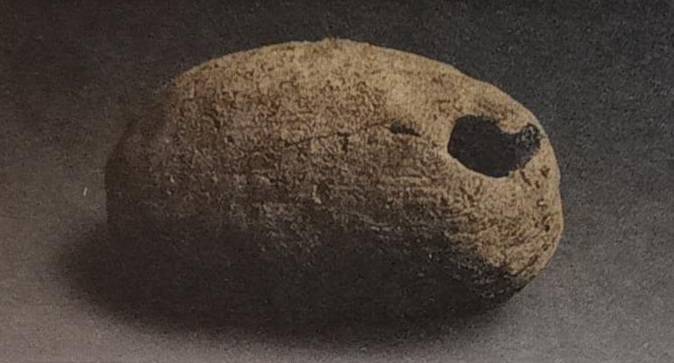
At the end of the Qin Dynasty, Chu and Han fought for domination of the world, and Xiang Yu, the overlord of Chu, was tightly besieged in Gaixia. In order to completely disintegrate the fighting spirit of the Chu army, Liu Bang asked the generals and counselor Zhang Liang to offer advice, and played the folk songs of the Chu land, which made the Chu army mistakenly think that they had occupied the Chu land and shook the hearts of the Chu soldiers.
Xiang Yu heard Chu folk songs all around him at night, and felt that the situation was over. The Chu army became even more disillusioned and lost its fighting spirit, eventually forcing Xiang Yu to cut the Wujiang River by himself. Regarding the "beleaguered song on all sides", it has always been said that Zhang Liang used the Xiao to play the Chu song. However, according to later records, the musical instrument Zhang Liang used at that time was not the Xiao, but the Chu song played with the xun. To this day, "Song of Chu" is also a famous Xun solo piece, which is desolate, tragic, and soul-stirring.
In the 20th century, Xun, which had disappeared in folk art activities, was reborn.
After the founding of the People's Republic of China, the nine-hole, ten-hole, and twelve-hole Zisha were successively developed, which could play twenty-six tones, and China Xun entered a new stage of development. Xun, the "voice from ancient times", has also conquered many foreign friends.
In 1984, when the 23rd Olympic Games was held in Los Angeles, Chinese musician Du Ciwen shocked the world with Tao Xun's performance of "Chu Song" at the Art Festival, infecting countless people. People are surprised that a musical instrument made of soil has such a moving melody and expressive power. The local overseas Chinese were very proud, and foreign media received rave reviews, saying: "I heard the oldest Chinese music for the first time!" They praised "Xun's tone is really charming, this is a music bottle that makes a wonderful sound".
Ancient Chinese musical instruments are like a splendid and magnificent treasure house, dazzling and rare in the world. Today, when we touch these instruments again, please don't forget the precious musical heritage that our ancestors left us and make it even more prosperous.
Involving musical instruments
Guess you like
Hot news
- 01 The handsome guy in 1997 is so advanced in pulling erhu! Netizen: Come and "wash your ears"
- 02 The Simple Difference Between Guqin, Se, and Guzheng
- 03 The difference between the five-stringed lute and the four-stringed lute
- 04 Dulcimer exam and performance repertoire
- 05 The difference between cymbals and cymbals in ethnic musical instruments
 渝公网安备 50010702504639号
渝公网安备 50010702504639号